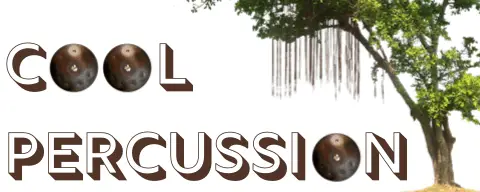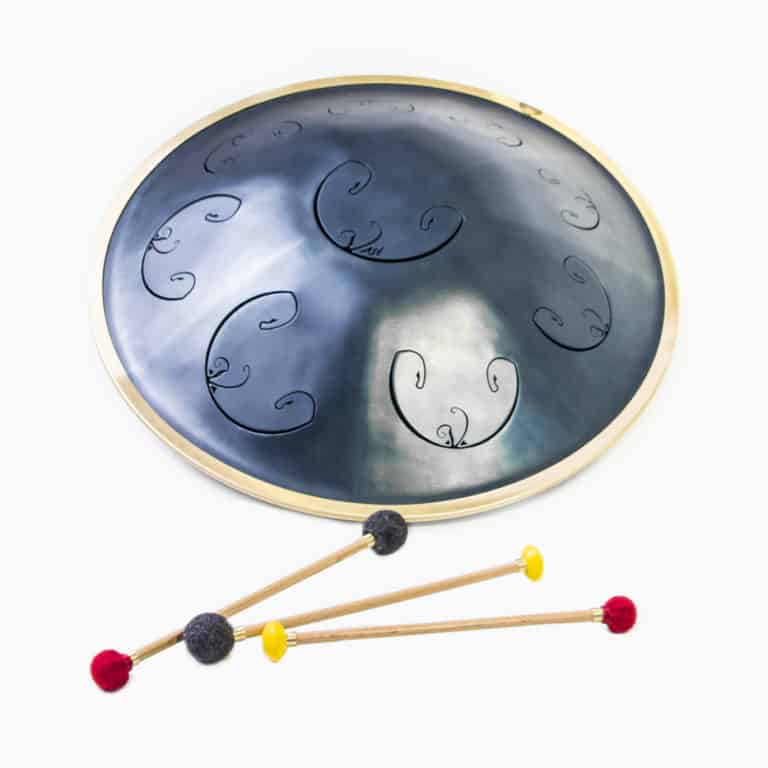Is Rav Drum Easy To Play? [Yes, with 1 essential trick]
You have seen a steel tongue drum being played, done a little research and discovered that instrument to be the incredible Rav vast Tongue Drum/Pan, whatever you may be calling it. You may be interested in buying one, or have already made an impulsive purchase. Now you want to know if you can play the rave vast
Anyone can play Rav Vast regardless of musical knowledge or skill. You need no musical background to play the Rav Vast Drum. Thanks to the way the drum is tuned, you can begin tapping notes that go seamlessly together without searching for the next, playing perfect melodies in moments.
So let’s take a look at why they are so easy to play, and find out what that one single tip is that will ensure you hit the ground, and your Rav vast, running.
Where to start for absolute beginners
Rav vast drums, tongue drums, and handpans are pitched percussion instruments that are tuned in such a way as to include a limited number of tone fields, tongues, and notes that work well together. This creates a situation where you can almost pick any note to play after the previous one and for them to sound good together.
You may have previously learned to play guitar or piano, and you will know this is definitely not the case there, with hundreds of notes just waiting to clash and many impossible to find without some serious digit gymnastics
With the Rav vast, even if you strike two [dyad] or three notes [triad] at the same time, you’ll find those chords sound awesome. Find out more about Dyads and Triads further down the article
Right now we are going to kick things off with how to strike the tongues to get the best sound
How to play a single note on a Rav vast
So, you are super excited because I’ve said and you have read that you can play the Rav vast out of the box and sound great. You might have had a go already and think I’m talking nonsense.
The 1 Thing You Need to Know when You Play Your first Rav vast note
Anyone can play Rav Vast when you know how to strike a note and make it ring. Don’t worry, there is no specialized technique that will take months of practice to master. It is one simple instruction.
When you strike a tongue on the Rav vast, do so quickly and release your finger or mallet as soon as you have made contact. The quicker the better. Let your fingers bounce on the notes.
Imagine flicking the side of a wine glass and the sound it makes, but if you tapped that wine glass and left your finger on, it would make no sound.
What about the school bell, pick it up and ring it and it can be quite loud, the second you put it down and it makes contact with another surface, it mutes.
The same thing will happen with the tuned steel of your Rav Vast, if your contact is short, sharp, and bounces off, you have mastered playing a note on a Rav vast and you can now consider yourself a player.
What else do I need? That Can’t be it?
OK, so your not Nadishana just yet but you are on your way.
To become a good Rav vast player, whilst not essential, the ability to create a rhythm will help you learn and/or construct your own songs.
Couple this with being familiar with your notes around the instrument as well as which hand to use and when and you are away
A rhythm can be as simple as playing 1-2-3-4 1-2-3-4 over and over. Again, you do not need any musical theory knowledge to play rhythms.
I 100% recommend checking out the videos below. Created by David Charrier of Master the Handpan. They provide a simple way to improve your Rav vast playing when you are ready
They provide a visual of how a note is struck and an introduction to using your hands to play some basic rhythms. They are an introduction series to his excellent Rav vast Video course, which you do not need to purchase to learn to play, but can help you become more proficient in time.
Whilst I think you can personally learn the Rav vast on your own for a long time, you may want to learn some more advanced techniques, to get the very most from your instrument.
Learning to play dyads and triads, when to use them and how to isolate the overtones found on the tongues can really add some spice and differentiation to your laying to stand you apart
Dyads and Triads
I don’t want to scare you with technical terms, but a quick explanation that dyads and triads are the names given to the chords played when two or three notes respectively are played at the same time.
One of the greatest explorations of the Rav vast you can conduct is experimenting with the tongues and the combinations and discovering just how much more your Rav vast is going to give you beyond the 9 or 10 notes from the tongues.
Work with your instrument and discover together
I won’t go into any more detail about the various idiosyncrasies of the instrument, as I want you to enjoy discovering it for yourself first. That was the most joyous time for me.
There is plenty of time to learn more about your instrument and you can do that over time together, or take some lessons to learn more of the technical aspects of playing Rav vast
Basic Technique Practice
The more you practice the more skilled you will become with keeping tempo on your rhythms and you will simply discover more that your Rav vast can do than you realized.
You will suddenly discover knuckle taps, slaps, and more in the way you strike the notes, and how to you can get different sounds by playing different areas of the tongues and using a second finger to isolate those overtones.
When you first get your Rav Drum, I am sure you will be like me, and be playing for several hours a day. Every spare minute, struggling not to think about it when you are working or doing some chores.
In the beginning, it is good practice to get into a regular cleaning routine. This will help maintain your Rav vast and especially in the early days when you just cant wait to get back to it and play, make sure your hands are clean and you give the instrument a wipe with a microfiber cloth both before playing and immediately after.
Lessons and Video Courses for Rav Vast
You have seen some free lessons above, albeit short and introducing you to a much longer video course that is available from Master the Handpan.
David has put together an amazing Rav essential course for beginners to learn some more advanced techniques of playing. Whether you have rhythm but can’t quite get the melodies going, or can hear and create the melodies, but can’t advance beyond a basic rhythm, there is a wealth of information and instruction with easy to follow guides, to improve your playing no end
At $149, it is a fraction of the price of your instrument and will pay you that amount back in spades in terms of the enjoyment you will get from your progress.
There are a total of 85 video lessons spanning the following sections
- Introduction
- Warmups & Exercises
- Binary Rhythms
- Coordination, Hand Independence, & Compositions
- Ternary Rhythms
- Arpeggios, Chords, and Melodies
- Training your ear
- Grooves, Patterns, build-up, Variations, Compositions
Are lessons for Rav vast worth it?
Purchasing lessons to play the Rav vast will be some o the best money you will spend. Even for experienced musicians, a few lessons on how to get the best out of an instrument you may never have seen, or played before will improve what you can learn on your own.


